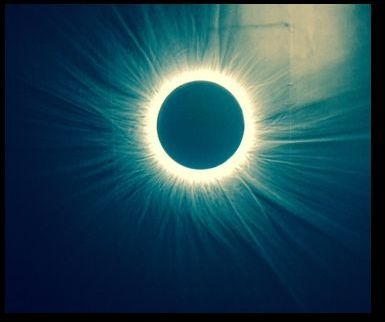
In Illinois, the place to be mid-day April 8 is Carbondale. That is ground zero for the full-totality solar eclipse that crosses the United States in 2024.
The town, home to Southern Illinois University, is holding a multi-day festival that includes a program by Chicago’s Adler Planetarium in SIU’s Saluki Stadium on April 8.
Mokena, IL, a tiny, arts community near Carbondale, is also holding a festival. This is where WGN weatherman Tom Skilling did his broadcast during the 2017 solar eclipse.
But if you live near Chicago and don’t travel down to Southern Illinois, the other place to be in the state is at the Adler Planetarium.
“This one is different from 2017,” said Michelle Nichols, Adler Planetarium Director of Public Observing. (Nichols will be doing the SIU program April 8.
Enumerating the differences, she said, “The direction is different.” After first talking about how it starts over water she said, “This eclipse goes from Mexico to Maine, Southwest to Northeast.” She noted that the 2017 eclipse went from Oregon to South Carolina. (Northwest to Southeast)
(NASA map readers will note the 2024 eclipse enters Canada in Southern Ontario, and continues through Quebec, New Brunswick, Prince Edward Island, and Cape Breton and will exit continental North America at Newfoundland’s Atlantic coast.)
“Also, the last was smaller,” said Nichols, explaining that the moon was further. “This is closer and the shadow covers a wider area.”
Another difference is the amount of time the eclipse takes and the area covered.
“This time the moon will be a tiny bit bigger. The shadow will be wider and will take longer in totality,” said Nichols. “In 2017 it was two minutes. This time it will be over four minutes.” she said.
(The maximum length of totality in 2017 was 2 minutes 40 seconds and 4 minutes 28 seconds in 2024.The width of the path of totality in 2017 as about 70 miles and in 2024 it will be about 115 miles.)
“Chicago will go from 12:51 p.m. to 3:22 p.m. with the maximum amount of totality at 2:07 p.m.” she said and added that Chicago would experience 94 percent totality.
Nichols cautioned that safety was very important so the Adler will have solar-appropriate, disposable glasses available on April 8 when it holds a free watching event. “Glasses will be handed out beginning at 11 a.m. until the supply runs out.”
According to Nichols, people who still have their solar glasses from 2017 can use them only if in good shape and not scratched or damaged. (Regular sunglasses won’t work)
Another reason to go to the planetarium is that visitors can watch through telescopes equipped with appropriate filters made with a 3D printer.
“We will have telescopes, about five to ten of them, for people to look through but they don’t have to be up close to the lens. The lens is very wide and they can take a picture of what they see,” she said.
For people watching at home she suggested they make a pin-hole camera with a card to capture the eclipse on paper or the ground so they don’t look at the sun.
Tips: NASA has a time chart of where totality will be when and where. For more eclipse information go to Adler Explore’s Chasing Eclipses. Also visit Enjoy Illinois for Solar Eclipse IL Guide and Solar Eclipse Carbondale and SIU Solar Festival.
Ed Note: Looking directly at the Sun without specialized eye protection for solar viewing will cause severe eye injury.
